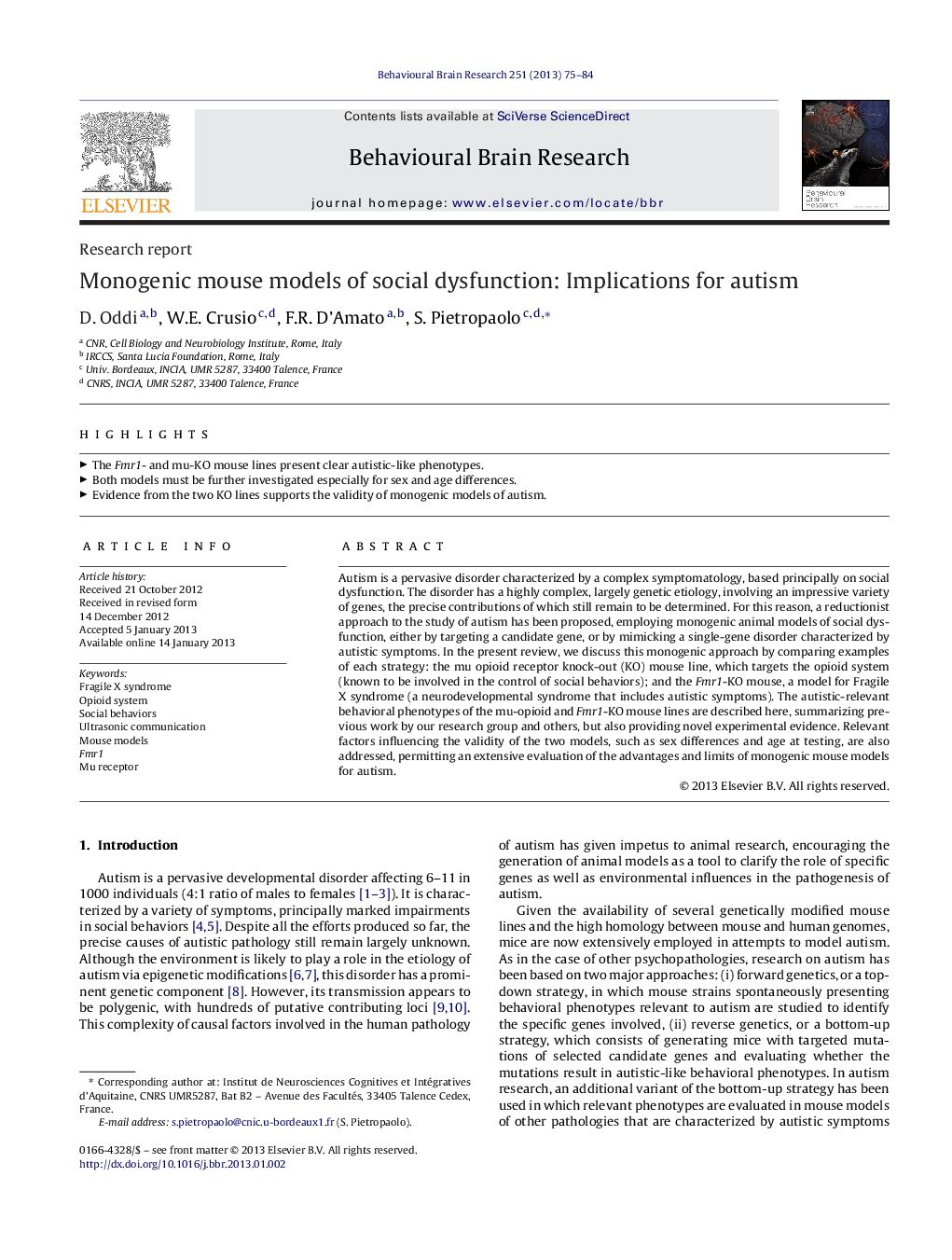| کد مقاله | کد نشریه | سال انتشار | مقاله انگلیسی | نسخه تمام متن |
|---|---|---|---|---|
| 6259070 | 1612981 | 2013 | 10 صفحه PDF | دانلود رایگان |
Autism is a pervasive disorder characterized by a complex symptomatology, based principally on social dysfunction. The disorder has a highly complex, largely genetic etiology, involving an impressive variety of genes, the precise contributions of which still remain to be determined. For this reason, a reductionist approach to the study of autism has been proposed, employing monogenic animal models of social dysfunction, either by targeting a candidate gene, or by mimicking a single-gene disorder characterized by autistic symptoms. In the present review, we discuss this monogenic approach by comparing examples of each strategy: the mu opioid receptor knock-out (KO) mouse line, which targets the opioid system (known to be involved in the control of social behaviors); and the Fmr1-KO mouse, a model for Fragile X syndrome (a neurodevelopmental syndrome that includes autistic symptoms). The autistic-relevant behavioral phenotypes of the mu-opioid and Fmr1-KO mouse lines are described here, summarizing previous work by our research group and others, but also providing novel experimental evidence. Relevant factors influencing the validity of the two models, such as sex differences and age at testing, are also addressed, permitting an extensive evaluation of the advantages and limits of monogenic mouse models for autism.
► The Fmr1- and mu-KO mouse lines present clear autistic-like phenotypes.
► Both models must be further investigated especially for sex and age differences.
► Evidence from the two KO lines supports the validity of monogenic models of autism.
Journal: Behavioural Brain Research - Volume 251, 15 August 2013, Pages 75–84
